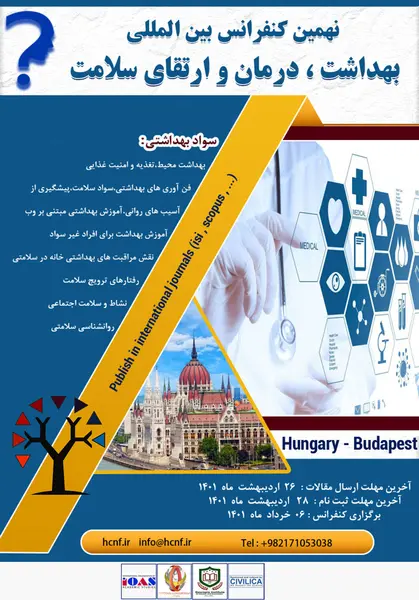-
the efficacy of bio-aerosol reducing procedures used in dentistry: a systematic review
جزئیات بیشتر مقاله- تاریخ ارائه: 1401/02/28
- تاریخ انتشار در تی پی بین: 1401/05/15
- تعداد بازدید: 169
- تعداد پرسش و پاسخ ها: 0
- شماره تماس دبیرخانه رویداد: 02171053833
the efficacy of bio-aerosol reducing procedures used in dentistry: a systematic review
because of the operating instrumentation in an oral environment soaked in salivary organisms, bio-aerosols are commonly created and airborne in clinical dentistry. sarscov-2 transmission, which is responsible for the present epidemic, occurs via airborne aerosols and droplets; hence, there has been a strong emphasis on such aerosol-generating techniques and their elimination.
as a result, the goal of this systematic review was to assess existing evidence on three primary methods targeted at minimizing bio-aerosols: rubber dam application, pre-procedural oral rinse, and high-volume evacuators (hve). a total of 156 records were found in the english literature, and 17 clinical trials involving 724 patients were included in the final analysis.
the insufficiency of three primary procedures employed in modern dentistry practice to decrease such bio-aerosols, namely rubber dam application, pre-procedural oral rinses, and hve, was highlighted by eligible papers. although no one strategy can give blanket coverage, the latter is a very successful method for reducing bioaerosols in dentistry. according to the current comprehensive evaluation, using a rubber dam in conjunction with a pre-procedural antimicrobial oral rinse and hve may contain bio-aerosols during operational operations.
مقالات جدیدترین رویدادها
-
استفاده از تحلیل اهمیت-عملکرد در ارائه الگوی مدیریت خلاقیت سازمانی و ارائه راهکار جهت بهبود
-
بررسی تاثیر ارزش وجوه نقد مازاد بر ساختار سرمایه شرکت های پذیرفته شده در بورس اوراق بهادار تهران
-
بررسی تأثیر سطح افشای ریسک بر قرارداد بدهی شرکت های پذیرفته شده در بورس اوراق بهادار تهران
-
بررسی تأثیر رتبه بندی اعتباری مبتنی بر مدل امتیاز بازار نوظهور بر نقد شوندگی سهام با تأکید بر خصوصی سازی شرکت ها
-
تأثیر آمیخته بازاریابی پوشاک ایرانی بر تصویر ذهنی مشتری پوشاک ایرانی (هاکوپیان)
-
مشخصات جریان ترافیک و ماهیت شناخت آن
-
بررسی پراکندگی و تراکم و قدمت اشکفت ها و معدن ها و مقبره های دستکند به ثبت رسیده در سازمان میراث فرهنگی ایران با استفاده از سامانه اطلاعات جغرافیایی
-
ارائه ی راهکارهای لازم برای مدیریت استراتژیک جوامع چند قومیتی بر اساس سیستم های چندمتغیره و دکوپله سازی آن ها
-
تاثیر بتن خود متراکم حاوی نانو سیلیس و متاکائولن در مقاومت فشاری محیط معمولی
-
کاربرد خوشه بندی فازی در تحلیل پروتئین های مرتبط با سرطان های مری، معده و کلون بر اساس تشابهات تفسیر هستی شناسی ژنی
مقالات جدیدترین ژورنال ها
-
مدیریت و بررسی افسردگی دانش آموزان دختر مقطع متوسطه دوم در دروان کرونا در شهرستان دزفول
-
مدیریت و بررسی خرد سیاسی در اندیشه ی فردوسی در ادب ایران
-
واکاوی و مدیریت توصیفی قلمدان(جاکلیدی)ضریح در موزه آستان قدس رضوی
-
بررسی تاثیر خلاقیت، دانش و انگیزه کارکنان بر پیشنهادات نوآورانه کارکنان ( مورد مطالعه: هتل های 3 و 4 ستاره استان کرمان)
-
بررسی تاثیر کیفیت سیستم های اطلاعاتی بر تصمیم گیری موفق در شرکتهای تولیدی استان اصفهان (مورد مطالعه: مدیران شرکتهای تولیدی استان اصفهان)
-
بررسی تاثیر آمیخته های بازاریابی سبز بر وفاداری مشتری در شرکتهای کوچک و متوسط محصولات غذایی سبز
-
امکان مطالبه و جبران غرامت و آسیب های جانی مالی نفتکش سانچی بر مبنای حقوق بین الملل
-
بررسی نقش فاکتورهای انگیزشی بر توانمندی کارکنان
-
معیارهای دموکراتیک در دنیای مدرن و اسلام در انتخابات منصفانه
-
comprehensive review on gas migration and preventative strategies through well cementing




سوال خود را در مورد این مقاله مطرح نمایید :